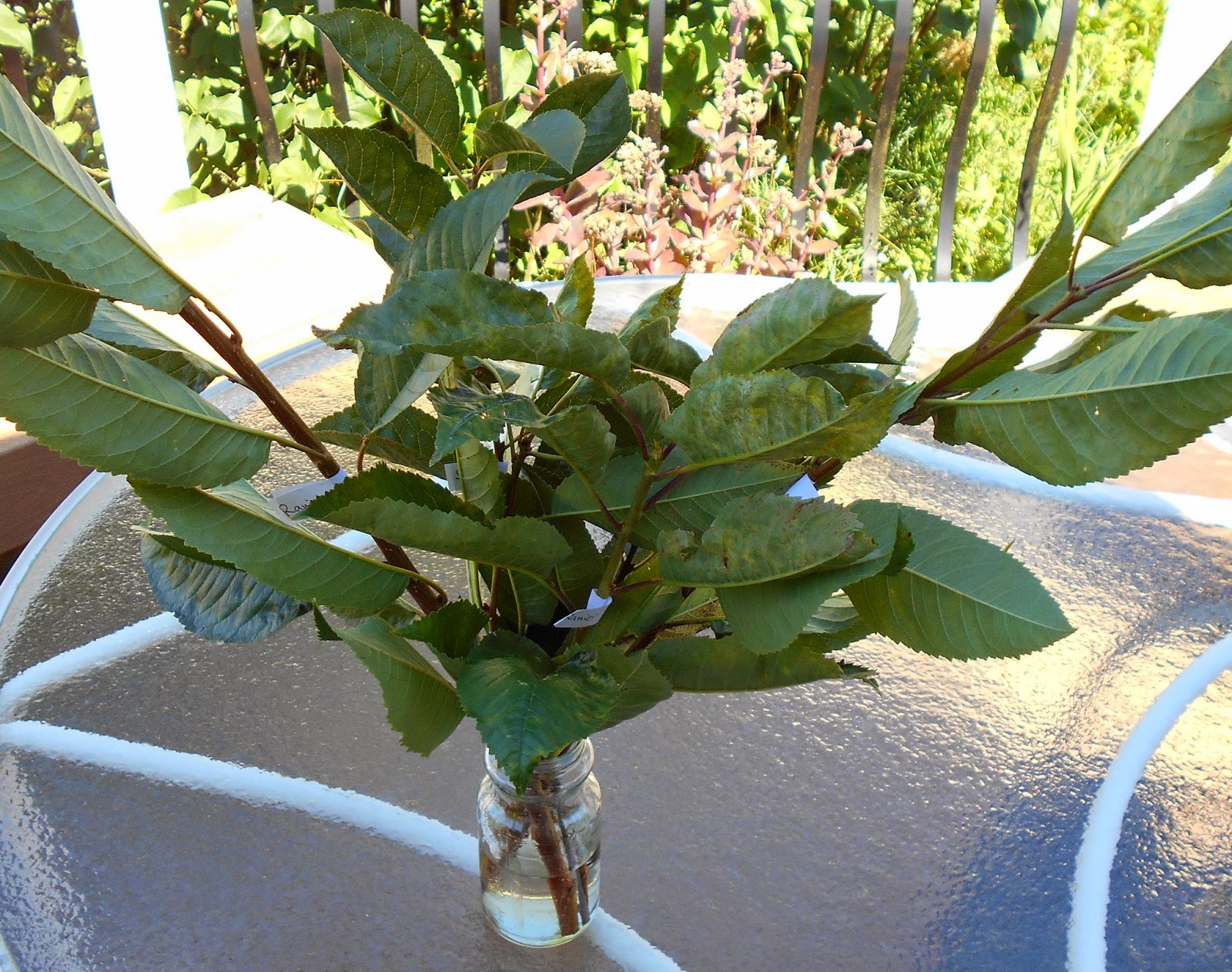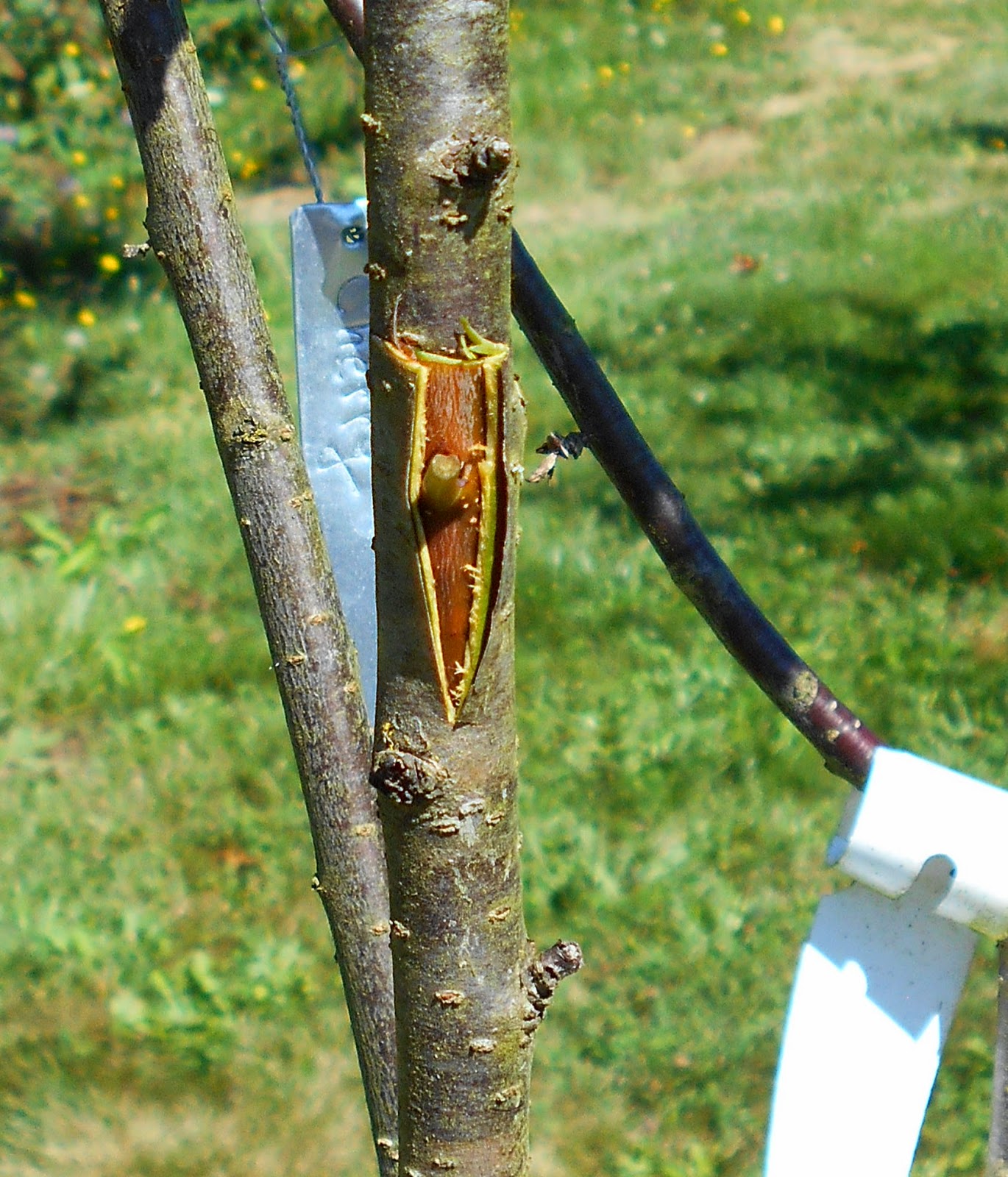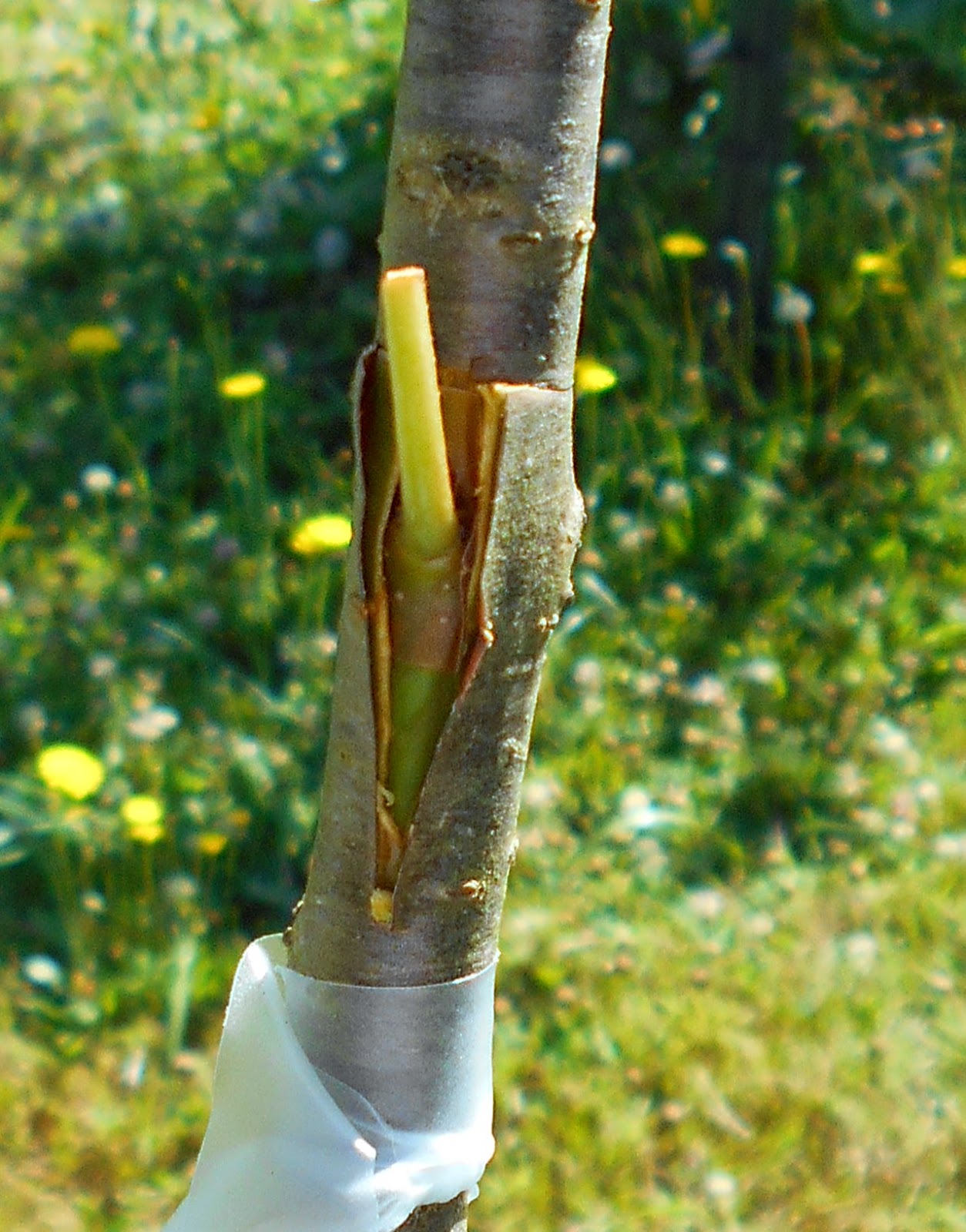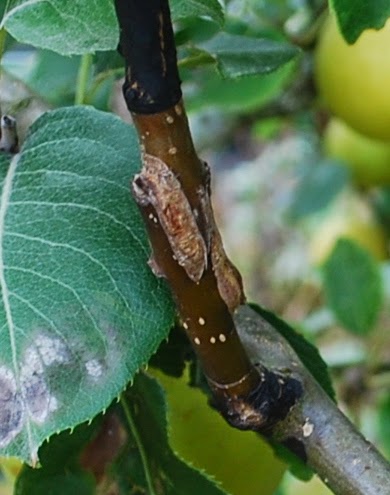 |
| Cherry Budwood. 7.27.14 |
 |
| Cherry Budwood, trimmed. 7.27.14 |
Today I am lazy. I did re-work 2 cherry trees, added new varieties to the established Asian plum, and added a pollinating peach variety to Indian Free Peach.
Why.
I have 2 cherries, in Battleground, that did not produce this year. The first is North Star, a tart cherry, which is in its 2nd year, about 5 feet tall. The branches tend to grow horizontally, which results in deer eating them. Some branches finally took off and grew, but it doesn't look like much and I don't expect much next year.
So for that one, I chose bud-wood from a Sure-Fire I have been growing in Vancouver for 10 years or more. Sure-Fire has an upright shape, so once the branches get past deer-height, should be relatively free of deer foraging. There are 3 main branches, with some bifurcations, on the North Start tree. One looks unhealthy, so I used the other two. I grafted the Sure-Fire buds onto each ramification of the branches, about 10 grafts.
The Cherry bud-wood is pictured. I cut it this morning, kept in water, and trimmed off the leaves before using.
The next photo shows the method I have been using. I slice into the bud-wood making a vertical cut on each side of the bud, a horizontal cut above the bud , and 2 angled cuts below the bud. I then peel the bud from the bud-wood. This is not the method most authors describe. I think it's an easier method for a novice like me, and it gave 100% success on the plums in June.
The 2nd cherry was Almaden Duke. I bought that variety thinking it might bloom later than sweet cherries, thereby giving a 2nd chance for cherries in late frost years. As it turned out, it bloomed at the same time as the sweet cherries. I moved it from Vancouver to Battleground in 2012. It was looking very nice, but this year the deer developed a taste for cherry branches. Again, this variety has a horizontal form, giving the deer fresh salad each time the branches started to grow. The branches that did survive being browsed, did not produce many cherries. It's time to rework it. Ning especially likes Ranier, so I removed budwood from the Ranier Cherry in Vancouver. Some Lapin as well, to keep it varied. I bud grafted using mostly Ranier, and a couple of Lapin buds, making use of all of the branches as close to the trunk as I could. I can let some Almaden Duke branches remain, to pollinate. They may produce better with the other in-tree pollinators, too.
 |
| Peeling Cherry Bud Shield from Budwood. 727.14 |
 |
| T-Bud Cherry. 7.27.14 |
 |
| T-Bud Cherry. 7.27.14 |
 |
| Reworked North Star -> Sure-Fire Cherry. Deer Net Added. 7.27.14 |
I wrap each bud as I go along, for minimal exposure to the elements.
The budwood now has a thin papery cuticle layer. I do not know if that layer should be removed. For maximum cambium contact it seems that layer should be peeled off. It seems to be non-living, peels like paper. For maximum protection of bud, it seems the cuticle layer should remain in place. So some buds, I left it on, and other buds, I peeled it off. It peels very easily, is not strongly adherent to the underlying epidermis.
I replaced the deer net for the re-worked tart cherry. I have not done that yet for the Duke / Sweet cherry but should.
I also added some buds to branches of established Asian Plum. I added
Toka and additional
Prunus cerasifolia. I think it would be useful to have In-tree pollenizers because it's so windy when they are in bloom, maybe all pollen from other trees, which are all downwind, blows away.
Finally, I added 2 buds to the little Indian Free Peach. This is one of the few peaches that is listed as needing a pollinator. In addition, that little tree is upwind from the potential pollinating varieties. I chose Oregon Curl Free because it was less bothered by leaf curl, compared to Charlotte.
This is my first attempt at grafting cherries and peaches. I'm curious to see if they take.
Bud grafting is an act of optimism. Growth is not likely until next year, and bloom or fruit, in 2017. A lot can happen before
 |
| Shiro Asian Plum, Bud Grafted onto unknown variety, at 2 months. 7.27.14 |
then.
















